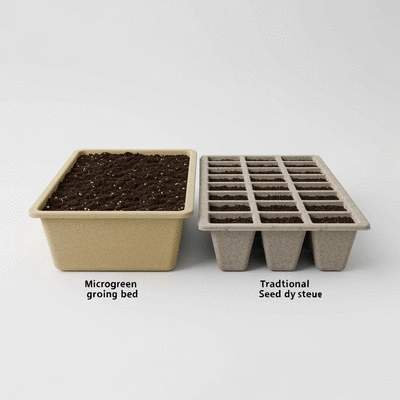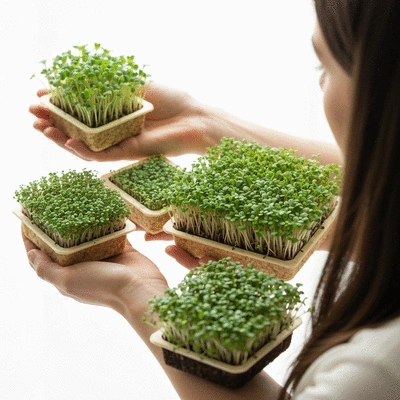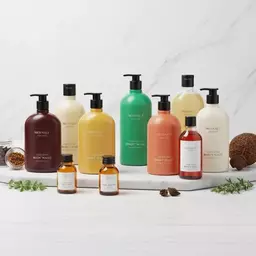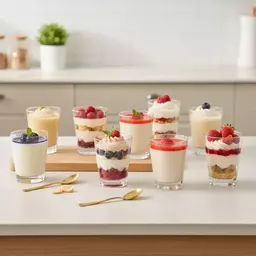Tray Type Comparison
Microgreen Trays
- ✓ Shallow depth
- ✓ Fast growth cycle
- ✓ Optimized drainage
Traditional Seed Trays
- ✓ Deeper design
- ✓ Longer growth periods
- ✓ Less specialized drainage
Stay ahead with the latest packaging innovations and insights from Clara Voss and Innovative Packaging Solutions.
Posted on: 2025-10-10
By: Clara Voss
Did you know that microgreens can contain up to 40 times more nutrients than fully grown vegetables? This powerful fact underscores the importance of understanding microgreen cultivation, particularly the role of trays in their growth.
This visual highlights the distinctions between microgreen trays and traditional seed trays, alongside the nutritional benefits of microgreens.
more nutrients than fully grown vegetables
Enhance your diet with these nutrient-dense powerhouses.
As we delve into the world of microgreens, it's essential to understand the key components that make successful growth possible. One of the most critical elements is the choice of microgreen trays. These trays are specifically designed for growing microgreens, allowing for optimal conditions that traditional seed trays might not provide. Let's explore what microgreen trays are and how they compare to traditional seed trays.
Microgreen trays are specially crafted to facilitate the growth of nutrient-dense greens. They typically feature a shallow design that allows for quick maturation, making them ideal for microgreens. On the other hand, traditional seed trays are often deeper and structured for various types of seedlings, which may not be conducive for the fast-growing microgreen varieties.
Understanding these differences is crucial, especially if you’re considering growing microgreens for culinary uses or as a business venture. The right tray choice can lead to healthier plants and higher yields!
When it comes to microgreen trays, size is a vital factor influencing your planting success. The standard size of 10x20 inches has become a popular choice for growers due to its versatility and compatibility with various growing systems. This dimension provides ample space while still fitting conveniently on shelves or under lights.
By opting for the 10x20 standard, you're setting yourself up for success in both home and commercial environments. It’s a smart choice that aligns with our mission at Innovative Packaging Solutions to provide products that empower your growing experience.
Microgreens are not just trendy; they are powerhouses of nutrition! Packed with vitamins, minerals, and antioxidants, these tiny greens can significantly enhance your diet. Studies have shown that microgreens often contain higher nutrient levels compared to their mature counterparts. For instance, research published in the National Library of Medicine highlights the nutritional value and health benefits of microgreens.
Incorporating microgreens into your diet is an easy step towards better health. Their versatility makes them perfect for salads, sandwiches, and even garnishes! Keep in mind that when selecting trays, the right options can amplify these benefits by fostering ideal growing conditions. You can find more practical guidance on cultivating these nutrient-rich plants from resources like Penn State Extension, which offers comprehensive advice on growing microgreens.
Microgreens not only enhance the nutritional value of your meals but can also significantly improve the visual appeal of your dishes. According to a study, the incorporation of microgreens can elevate the perceived freshness and quality of food, leading to a more enjoyable dining experience.
When it comes to choosing between microgreen trays and traditional seed trays, understanding the key differences can make all the difference in your gardening success. Both types of trays serve their unique purposes, yet each comes with its own set of features and benefits. I’ve seen firsthand how the right choice can elevate your growing experience, whether you’re a commercial grower or just getting started at home! For those new to growing, resources like Mississippi State University Extension provide excellent guides on microgreen cultivation, including advice on selecting appropriate trays.
Here’s a quick summary of the primary differences you might want to consider:
These distinctions are vital when deciding which tray best suits your needs. My clients often report that microgreen trays facilitate a faster turnaround, which is fantastic for those looking to maximize their yield in a limited space.
Deciding between microgreen and traditional seed trays boils down to your specific gardening goals. Are you aiming for quick harvests with vibrant, nutrient-dense microgreens? Or do you require sturdy trays for nurturing your seedlings into robust plants? Both options have their merits, but understanding how they fit into your overall gardening plan is essential.
As I’ve learned throughout my years in the packaging industry, adaptability is crucial. Microgreen trays are fantastic for those who want to experiment with diverse varieties in a compact space, while traditional trays suit growers looking for longevity and larger yields.
Before you make your purchase, here are a few factors to keep in mind:
At Innovative Packaging Solutions, we emphasize quality in every tray we offer, ensuring that you have the best materials for your unique needs. I highly recommend that you choose trays that align with your gardening philosophy and sustainability efforts!
The future of urban farming is bright, and it’s influencing designs in microgreen and traditional seed trays alike! As more people turn to gardening in small spaces, manufacturers are adapting by developing innovative designs that maximize efficiency and sustainability. I believe that embracing these new technologies will not only enhance our growing experiences but will also promote environmental awareness.
Imagine trays designed with integrated irrigation systems or those made from fully biodegradable materials—exciting, isn’t it? As we look ahead, I’m keen to see how these advancements will support our mission at Innovative Packaging Solutions to provide quality, sustainable packaging materials that empower businesses and gardeners alike.
Here is a quick recap of the important points discussed in the article:



 Choosing the right planting method can significantly impact your gardening success. As a gardener, u
Choosing the right planting method can significantly impact your gardening success. As a gardener, u
 As brands strive to resonate with an increasingly personalized consumer base, the packaging of produ
As brands strive to resonate with an increasingly personalized consumer base, the packaging of produ
 In the world of foodservice, presentation and convenience are key. By embracing microwave-safe desse
In the world of foodservice, presentation and convenience are key. By embracing microwave-safe desse